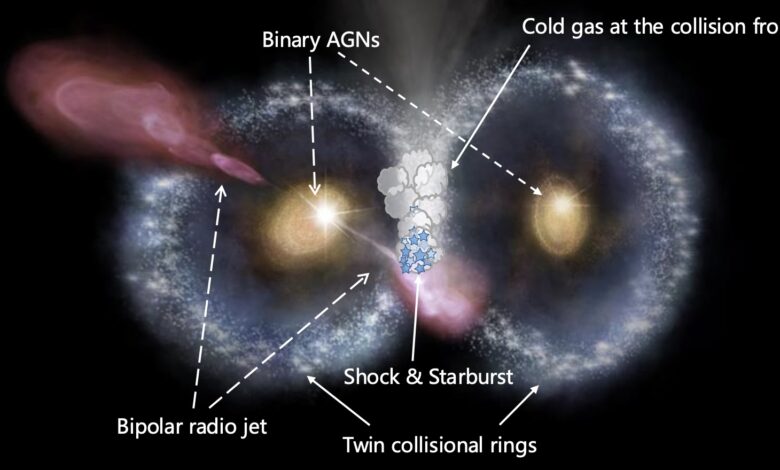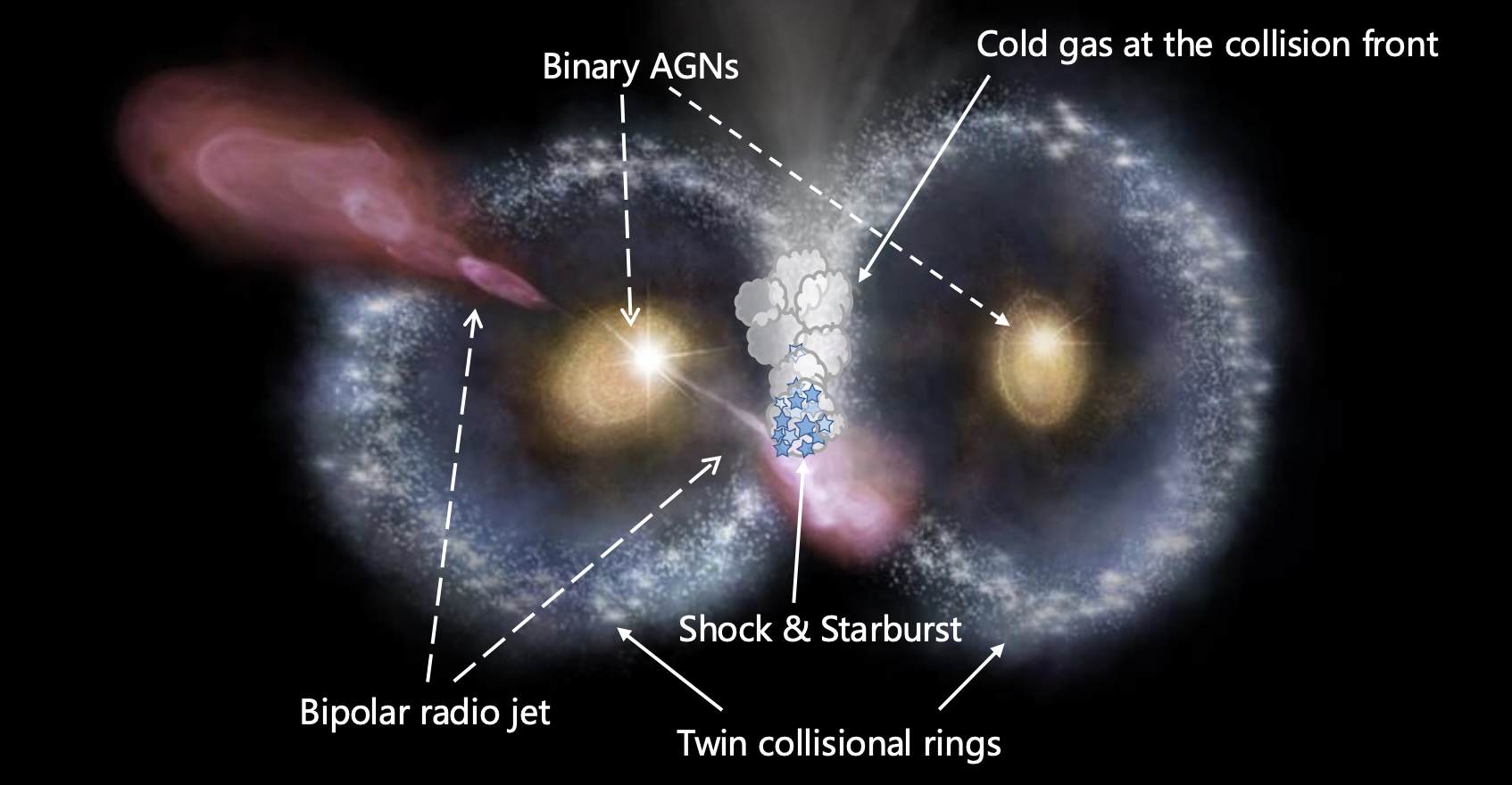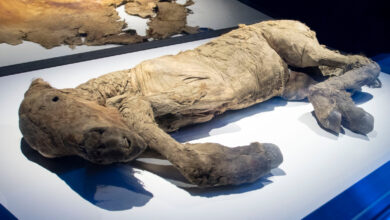James Webb telescope spots ‘Cosmic Owl,’ super-rare structure formed from colliding ring galaxies

Whoooooo’s there? Just a “Cosmic Owl,” the latest strange discovery from the James Webb Space Telescope (JWST).
A new study using JWST data has helped scientists spot an owl-faced object peering out at us from billions of light-years away. Formed through the extremely unusual collision of two rare ring galaxies, the structure also serves as a natural laboratory where researchers can study many of the processes accompanying the evolution of galaxies.
Galaxies come in several shapes, from swirling spirals like our home galaxy, the Milky Way, to the cigar-shaped M82. One slightly more peculiar type are ring galaxies, such as Hoag’s Object. These galaxies form when a small galaxy cruises straight through its larger buddy, kicking out stars and gas through shock waves into a ring around a central core.
Ring galaxies are pretty rare, accounting for just 0.01% of all galaxies discovered so far. Even rarer, though, is a pair of ring galaxies detected when colliding — exactly what the “Cosmic Owl” is, as described June 11 in a preprint posted to arXiv. The paper has yet to be peer-reviewed, but the object has already been confirmed by another team that independently detected the same collision — which they dubbed the “Infinity galaxy” in a paper posted to arXiv June 19.
Mingyu Li, a doctoral student in the Department of Astronomy at Tsinghua University in China and the new study’s first author, said he and his co-authors discovered the avian-like astronomical spectacle serendipitously.
“We were analyzing all radio sources using public JWST data in a very well-studied region called the COSMOS field,” the largest mosaic of the sky, spanning 2 square degrees, he told Live Science in an email. Li added that the colliding galaxy pair immediately stood out because of JWST’s high-resolution imaging capabilities.
Related: 42 jaw-dropping James Webb Space Telescope images
These snapshots revealed that the galaxies are quite similar; apart from being ring galaxies, both are relatively tiny. Each has a diameter of roughly 26,000 light-years, or about a quarter the diameter of the Milky Way. Additionally, each galaxy’s core — which is tightly packed with old stars around a supermassive black hole — forms an eye of the owl. Fine-scale JWST data shows that both black holes, each more than 10 million times the sun’s mass, are furiously pulling in surrounding matter, making the galactic cores “active galactic nuclei.”

In contrast, the JWST images show that the “beak” — the collisional front between the two galaxies — is “a region of incredibly intense activity,” Li said. Drawing on data from the Atacama Large Millimeter/submillimeter Array (ALMA) in Chile, the researchers found that the beak contains an enormous clump of molecular gas. Li described it as “the raw fuel for star formation,” being squished by the galaxies’ collision-related shock wave. The ALMA data also placed the owl’s redshift at 1.14, or approximately 11 billion light-years from us.
Additionally, radio-frequency observations from the New Mexico-based Very Large Array suggest that a jet of charged particles spewing from one galaxy’s black hole is slamming into and further compressing the molecular gas cloud. According to Li, the shock wave and the radio jet have together “triggered a massive burst of star formation,” transforming the beak into a ‘stellar nursery.'”
Simulations of galactic collisions show they last a few hundred million years. In this case, the researchers estimate the collision occurred 38 million years ago, meaning the owl’s face will likely remain visible for a long time.
But the owl isn’t just visually striking, Li said — it’s also “an exceptional natural laboratory because it allows [researchers] to see several critical galaxy evolution processes happening simultaneously in one system.”
In fact, the owl has already provided valuable insights about how galaxies form and grow. Li said the bursts of star formation triggered by the galactic collision and radio jets in the beak region “could be a crucial and previously underappreciated mechanism for the rapid and efficient conversion of gas into stars.” This could help researchers understand how galaxies built their stellar mass so quickly in the universe’s early history, he added.
The researchers plan to study the owl further to understand the physical processes that created it. Li said simulations of the galaxies’ gas would help researchers “understand the precise conditions — such as the collision angle and the original structure of the galaxies — that could lead to the formation of such a rare, symmetric ‘twin-ring’ morphology.”
The owl joins several bizarrely shaped astronomical phenomena that JWST previously spotted. These include a question-mark-shaped structure formed from galaxies and a wisp of gas from a newborn star that resembles a cat’s tail.
Source link




